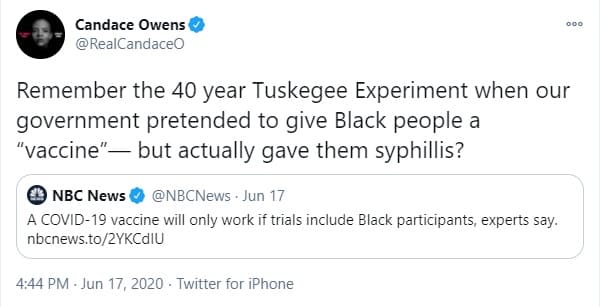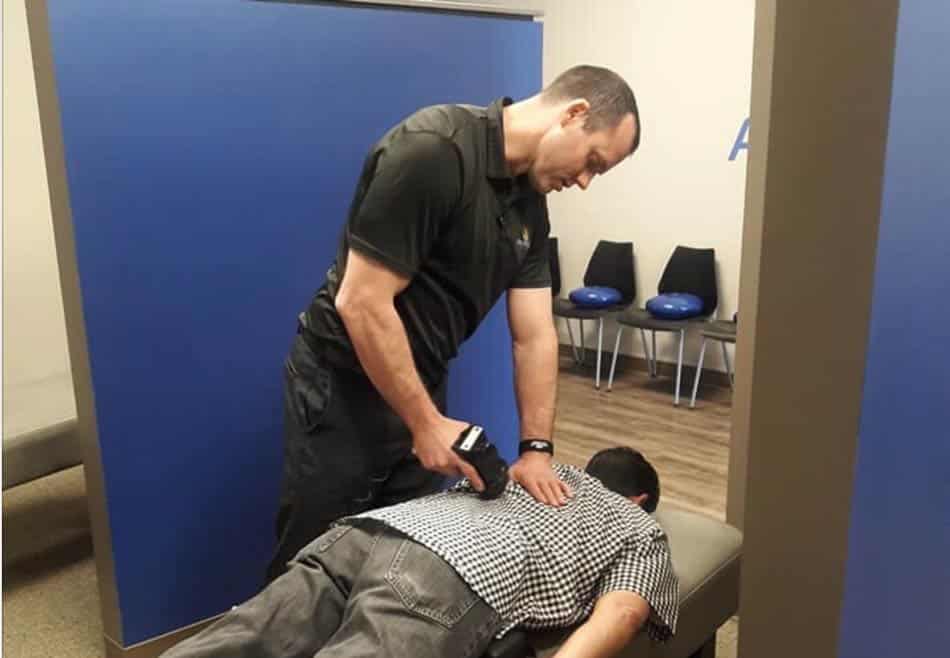The Appalling Tuskegee Syphilis Experiment
VIDEO TRANSCRIPT (BELOW)
“In 1932, the medical community still did not know a whole lot about treating syphilis. This was the case despite documentation of the disease dating all the way back to around when Columbus made his famous jaunt across the big blue. According to the Oxford Journal, syphilis was a “cultural embarrassment” and had many different names that exemplified prejudices of different nationalities. The German and English called it the “French Pox.” The Russians referred to it as the “Polish sickness” and the Poles as the “German sickness.” The Japanese called it the “Chinese ulcer.”
In the 16th century, Europe experienced a syphilis epidemic, which was likely caused by the abundance of sailors traveling from sea port to sea port and doing what sailors do when they come into port. In fact, there is some evidence that points to Columbus and his crew being the ones who brought syphilis back from the new world.
Anyway, despite the disease being around for four or five centuries, there was not one, true, successful treatment for it. One popular remedy for several centuries was the use of mercury, which is quite poisonous in its own right. People would either ingest it or rub it on the skin. This led to the popular saying “a night in the arms of Venus leads to a lifetime on Mercury.”
In 1908, Japanese scientist Sahachiro Hata (working in Germany) discovered the drug Salvarsan was somewhat effective as a treatment for syphilis. It was also quite toxic, as it came from the arsenic family. There were instances of patients losing limbs after taking the drug.
Eventually, in 1912, Hata and Nobel Prize winner Paul Ehlric developed an easier-to-administer, but still toxic, drug called Neosalvarsan—which became the standard treatment for syphilis until the late 1940s.
In the early 20th century, the United States Public Health Service (PHS) was in charge of monitoring, identifying, and figuring out ways to treat ailments, diseases, and conditions that were impacting all US citizens. They were divided into divisions, with one division completely focused on venereal diseases.
In 1957, this particular division would be transferred over to the Center for Disease Control (CDC), but in 1932 the PHS covered sexually transmitted diseases. Between 1929-1931, the Rosenwald Fund, an organization that promoted the education and health care of poor African-American farmers, sponsored a study with the PHS to identify the Southern counties with the highest rate of syphilis among African-American males. Their original intention was to identify and treat the disease. Macon County, Alabama had the highest rate, with over thirty five percent of the male population infected with the disease.
By 1931, the Great Depression was at its height and the Rosenwald Funds were short. Despite the need to continue research, the Rosenwald Fund stopped operating in this capacity. So, the PHS approached the Tuskegee Institute (located in Macon County) about forming a research group in order to study the effects of untreated syphilis on a black male population for a duration of six to nine months and then follow-up with a treatment plan. The Institute agreed, along with the head of the University’s hospital Dr. Eugene Dibble.
The study, during the first year, was led by Dr. Taliafero Clark. The PHS enrolled six hundred Macon County men, 399 with syphilis and 201 who weren’t infected, they would be a part of the study. None of the men actually knew what the study was for. They were lured in with the promise of “free health care,” something that none of them had, and also the treatment of “bad blood,” a general localized term that encompassed several different afflictions, including anemia, fatigue, and other venereal diseases. The men were told that they were going to get free medical exams, meals, and burial insurance. For those who actually had syphilis, they were never informed of their diagnosis nor given any treatment for it.
Additionally, very painful and unnecessary spinal taps were performed on many in the study. It was said that the reason for the deception was that it would be the only way the men would stay in the study and the researchers wanted to closely observe the course of the disease over a large sample-size to see the effects as the disease progressed, even to death. But not to worry, as long as the ones that died allowed autopsies to be performed, their funeral expenses would be covered.
It was actually not an uncommon practice at the time of taking the government’s consent in medical manners, rather than the individual. But in part, the deception seemed to result from the lack of respect the doctors had for the men’s intellectual capabilities (most were illiterate, which the researchers thought was helpful as it would be harder for the subjects to figure out what was going on); there was also less than subtle hints of racial prejudice.
For example, in a letter to a colleague, Dr. Clark wrote that “these negroes are very ignorant and easily influenced by things that would be of minor significance in a more intelligent group.” Dr. Raymond Vonderlehr was the on-site director of the study. He actually supported partial treatment for the men for the sole purpose of making sure they remained in the study (as in, stayed alive). He was the one who gained “consent” of the men for spinal taps via letters that he sent to them. They read: “You will now be given a last chance for a second examination. This examination is a very special one and after it is finished you will be given a special treatment if it is believed you are in condition to stand it.” The study was initially only planned to go on for nine months, but it went on for, well, beyond a year and then, due to breakthroughs was extended beyond that.
In 1934, two years after the study began, the first major paper was published detailing health effects on untreated syphilis.
By 1936, according to the CDC, a medical paper was published criticizing the treatment plan for the men.
1940 brought efforts “to hinder the men (in the study) from getting treatment ordered under the military draft effort.” You see, about 250 of them had registered for the draft and been found to have syphilis and ordered to be treated.
In 1928, Nobel laureate Alexander Fleming discovered penicillin.
1930 was the first recorded medicinal use of penicillin to treat infections.
After penicillin was used to treat the survivors of the Boston Cocoanut Grove fire in 1942, it became the medicine of choice for the United States military for infections.
By 1945, penicillin was the accepted treatment for syphilis.
Despite this, the subjects of the Tuskegee Syphilis Experiment were never administered nor offered penicillin as treatment. The study administrators wanted to watch the progression of the disease as the men got sick and, in many cases, died for the forty years the study went on even though for much of it a relatively effective treatment was available. All total it’s estimated that 128 of the men died either directly from syphilis or complications related to it, 40 also infected their wives (and in some cases possibly others), and there were 19 of the men’s children who were born with congenital syphilis.
Finally, on July 25, 1972, Jean Heller of the Associated Press broke the story that uncovered the truth about the study. A government panel ruled that the study was “ethically unjustified” and ended it.
In the summer of 1973, attorney Fred Grey filed a class-action suit on behalf of the men against the PHS and it ended with nine million dollars (which is about fifty million dollars today) being handed out to the participants as settlement.
And I have some bonus facts. In a similar study, this time to test penicillin’s effectiveness in treating syphilis and other STDs, researchers led by Dr. John Charles Cutler who is also involved in the Tuskegee experiment from the United States (funded by the Public Health Services and Pan American Health Sanitary Bureau, and the National Institutes of Health) headed to Guatemala in 1946 and found prostitutes who had syphilis. He then got them to then give it to unsuspecting Guatemalan soldiers, mental health patients, and prisoners. They also directly infected certain individuals by (to quote Michael Cook from BioEdge)
“…direct inoculations made from syphilis bacteria poured into the men’s penises and on forearms and faces that were slightly abraded or in a few cases through spinal punctures.”
It isn’t known how many people died as a result of this as the results from the study were never published. By the way, Dr. John Cutler faced no consequences for the numerous people that died in his experiments and even led an illustrious and celebrated career, including at one point being an assistant to the US surgeon general.
Now for another bonus fact. Syphilis is a sexually transmitted disease, and one of the symptoms is marks on the hands and face of the infected person. These marks could often be found during this time on Catholic priests, cardinals, and a pope. It showed that celibacy couldn’t be policed and was not always followed. For reference, Catholic priests were first required to be celibate in 304 AD thanks to the Council of Elvira, which resulted in Canon 33 stating: “bishops, presbyters, and deacons and all other clerics… [must] abstain completely from their wives…” However, this wasn’t widely adopted at this time and it wasn’t until the Second Lateran Council of 1139 when priests were forbidden to marry. In 1563, the Council of Trent once again affirmed this stance on celibacy and against marriage. The priests are still human, however. And perhaps one of our favorite quotes from the famous theologian Martin Luther, he stated, “Nature never lets up… We are all driven to the secret sin. To say it crudely but honestly, if it doesn’t go into a woman, it goes into your shirt.”




